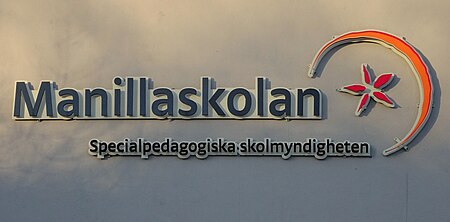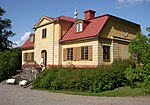Manillaskolan

Manillaskolan ('Manilla School'), before 1879 Allmänna institutet för döva och blinda å Manilla ('Public Institute for the Deaf and Blind at Manila'), is a Swedish state school for blind, deaf and hard of hearing children, founded by Pär Aron Borg in 1809. Until the autumn term 2013, the school was located at Djurgårdsvägen on Södra Djurgården in Stockholm. The school is now located in the former premises of the Stockholm Institute of Education in Konradsberg on Kungsholmen. Manillaskolan is a state special education school run by the National Agency for Special Needs Education and Schools (Specialpedagogiska skolmyndigheten, SPSM). The school has been located on Kungsholmen in Stockholm since 2013 and should not be confused with the school Campus Manilla run by the foundation Carpe Scientia, which took over Manilla School's old premises on Djurgården in 2013.
Excerpt from the Wikipedia article Manillaskolan (License: CC BY-SA 3.0, Authors, Images).Manillaskolan
Djurgårdsvägen, Stockholm Djurgården (Östermalms stadsdelsområde)
Geographical coordinates (GPS) Address Phone number Website External links Nearby Places Show on map
Geographical coordinates (GPS)
| Latitude | Longitude |
|---|---|
| N 59.323611111111 ° | E 18.133333333333 ° |
Address
Manillaskolan
Djurgårdsvägen
115 21 Stockholm, Djurgården (Östermalms stadsdelsområde)
Sweden
Open on Google Maps









